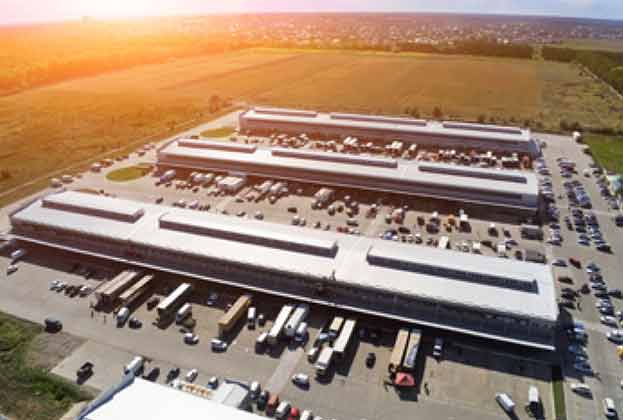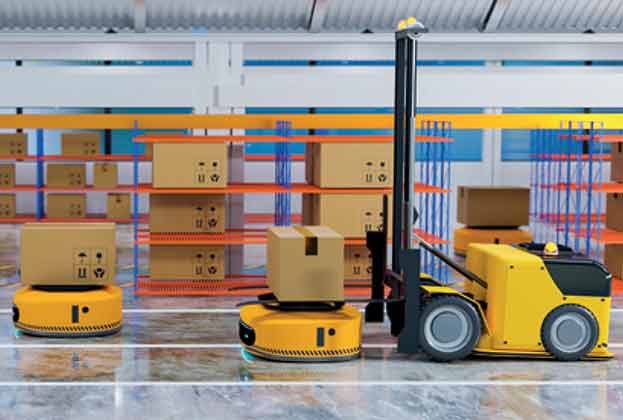As online retail continues to grow, the warehouse market will see more occupiers less sensitive to rent rises, as Kevin Mofid, EMEA Head of Logistics Research for Savills examines
Location, location, location: it is the age-old adage when it comes to analysing property markets. However, as we have demonstrated for an occupier of warehouse space, location is key when we consider where goods are going, where they are coming from, and the cost of transportation to get them there. For parcel operators and e-commerce companies, 75% and 50% of the cost stack, respectively, is taken up by transportation, costs that fall to just 41% for traditional bricks and mortar retailers.
We have created a sample of the warehouse property market, taking the largest pure play retailers, the largest parcel companies and the largest high street retailers in the UK. This gives us a sample of c.155m sq ft spread across 736 units, all over 20,000 sq ft.
From this data we can see that online retailers and parcel operators have, perhaps unsurprisingly, concentrated their units in the areas of highest population, whereas high street retailers have a more balanced spread of units but weighted to the core logistics markets of the South East, East Midlands and Yorkshire.
When we consider that, according to Forrester, the level of online retail will reach 37% by 2025, it is clear to see that online retailers and parcel operators, in particular, will need to increase the size of their portfolios to cope with increased demand. With vacancy rates currently at record low levels and not expected to rise dramatically, coupled with rising demand from other users of warehouse space, it is no surprise that rents are expected to rise by an average of 25% across the UK by 2026.
Taking our cost stack model and making some assumptions about future cost increases demonstrates that different occupier types and different geographies will be impacted differently by rising costs.
By taking our model, as described on 'Selecting a site', and making some assumptions on cost rises by 2026, we can see just how severe the challenge will be for operators in controlling their transport costs. Whilst we are assuming that profit margins can be maintained, the cost rises appear severe. Indeed, for a parcel operator, assuming that transport costs rise by 30% by 2026, we can see that this element of cost now accounts for 76% of total costs.
For a parcel business, a 12% increase in rent would only add around one percentage point to total operating costs
Kevin Mofid, Head of Logistics & Industrial Research, Commercial Research
Rolling forward rent rises by an average of 25%, and assuming that business rates rise by an average of 30% means that for high street retailers the rent and rates element of cost now sits at 24% of overall costs, rather than 23%, but for parcel companies, this element remains static at 12% of costs.
If, however, we agree with consensus forecasting that inflationary pressures around energy and fuel costs will subside in 2023 and assume that overall energy and transport costs will only see a 10% rise by 2026, then the proportion of total costs covered by rents and rates rises to an average of 20%, up from 18% in 2019.
Whilst the cost of property will be in the spotlight of company decision makers, given the cost pressures we have highlighted, it should also be noted that as the online retail segment of the retail sector continues to grow, the market available to e-commerce companies and parcel carriers will also continue to grow, and therefore margins can be maintained.
Indeed, the latest data from the ONS suggests that 2021 saw total retail sales of £421bn (excluding fuel), with online sales roughly accounting for £110bn. Considering we expect online retail sales to account for 37% of all sales by 2025, this would imply that the market will be 44% bigger, made up of £158bn of sales.
With our model showing cost rises of 40%, this suggests the level of online spending growth outstrips any cost pressures, meaning that for a key element of the logistics property market, rent rises are manageable, all else being equal.
Investor opinion
Online continues to grow market share, driving revenue growth for these businesses. Ensuring occupiers have the right real estate to meet operational requirements today and in preparation for tomorrow is business-critical.
Real estate costs are a small proportion of the overall cost base, but it is large enough that asset decisions are taken seriously. Having the right asset in the right location drives efficiencies for the overall business. Being located close to your customer or supplier can mitigate other costs that are a much larger component of the total cost than the property cost.
These locations are often in short supply and compete with other land uses. As a result, the right asset in the right location is in a perfect storm of increasing demand as online market share grows and falling supply, as real estate stock is either taken up or lost to other land uses.
With online market share forecast to grow 44% in the next five years from 26% to 37% and costs anticipated to grow by 40%, it appears that the best assets will continue to attract premium rental levels, see further rental growth and supporting cap rates.
Andrew Smith – LondonMetric
Read the articles within Spotlight: The affordability of warehouse rents below.
.jpg)


